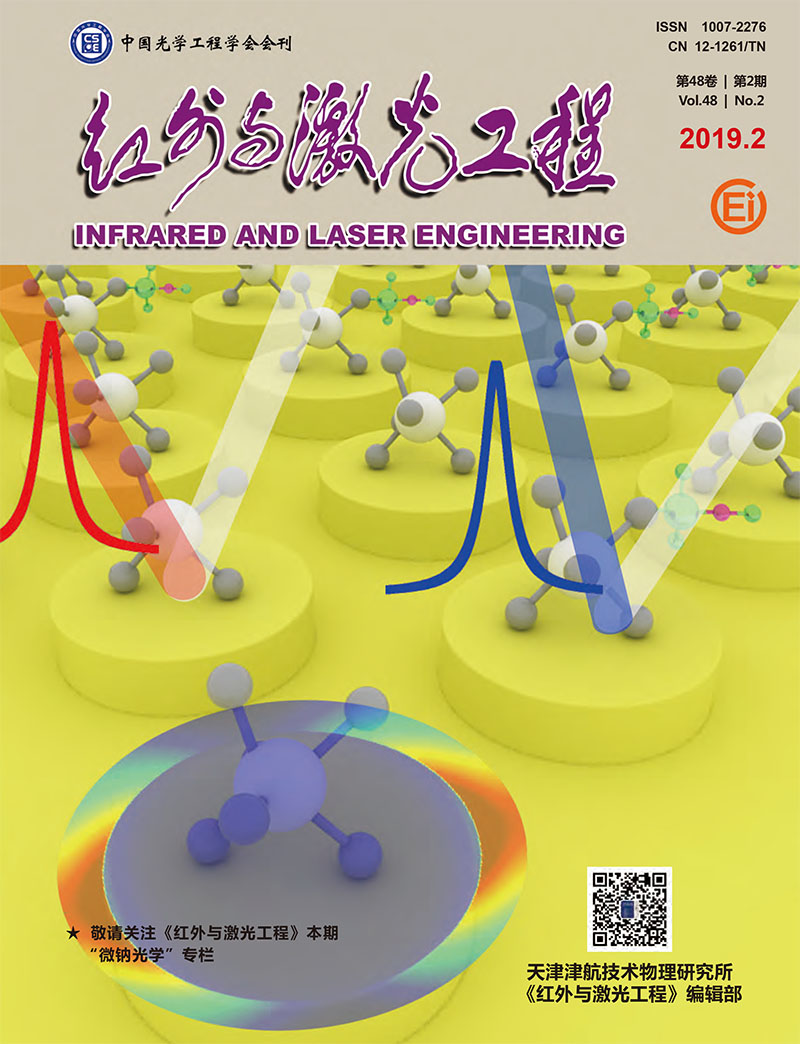|
[1]
|
Guo Quanmin, Dong Liang, Li Daiti. Vehicles anti-halation system based on infrared and visible images fusion[J]. Infrared and Laser Engineering, 2017, 46(8):0818005. (in Chinese)郭全民, 董亮, 李代娣. 红外与可见光图像融合的汽车抗晕光系统[J]. 红外与激光工程, 2017, 46(8):0818005. |
|
[2]
|
Wang Xin, Ji Tongbai, Liu Fu. Fusion of infrared and visible images based on target segmentation and compressed sensing[J]. Optics and Precision Engineering, 2016, 24(7):1743-1753. (in Chinese)王昕, 吉桐伯, 刘富. 结合目标提取和压缩感知的红外与可见光图像融合[J]. 光学精密工程, 2016, 24(7):1743-1753. |
|
[3]
|
Peng Yiyue, He Weiji, Gu Guohua, et al. Visible and infrared image fusion based on multi-level method and image contrast improvement[J]. Infrared and Laser Engineering, 2013, 42(4):1095-1099. (in Chinese)彭逸月, 何伟基, 顾国华, 等. 多层级及对比度提升的红外和可见光图像融合[J].红外与激光工程, 2013, 42(4):1095-1099. |
|
[4]
|
Hauser S, Steidl G. Convex multiclass segmentation with shearlet regularization[J]. International Journal of Computer Mathematics, 2013, 90(1):62-81. |
|
[5]
|
El-taweel G S, Helmy A K. Image fusion scheme based on modified dual pulse coupled neural network[J]. IET Image Processing, 2013, 7(5):407-414. |
|
[6]
|
Liu Shengpeng, Fang Yong. Infrared image fusion algorithm based on contourlet transform and improved pulse coupled neural network[J]. Journal of Infrared and Millimeter Waves, 2007, 26(3):217-221. (in Chinese)刘盛鹏, 方勇. 基于Contourlet变换和IPCNN的融合算法及其在可见光与红外线图像融合中的应用[J]. 红外与毫米波学报, 2007, 26(3):217-221. |
|
[7]
|
Qu X B, Yan J W, Xiao H Z, et al. Image fusion algorithm based on spatial frequency-motivated pulse coupled neural networks in nonsubsampled contourlet transform domain[J]. Acta Automatica Sinica, 2008, 34(12):1508-1514. |
|
[8]
|
Geng P, Wang Z Y. Zhang Z G, et al. Image fusion by pulse couple neural network with shearlet[J]. Optical Engineering, 2012, 51(6):067005. |
|
[9]
|
Kong W W, Zhang L J, Lei Y. Novel fusion method for visible light and infrared images based on NSST-SF-PCNN[J]. Infrared Physics Technology, 2014, 65:103-112. |
|
[10]
|
Jiang Ping, Zhang Qiang, Li Jing, et al. Fusion algorithm for infrared and visible image based on NSST and adaptive PCNN[J]. Laser Infrared, 2014, 44(1):108-113. (in Chinese)江平, 张强, 李静, 等. 基于NSST和自适应PCNN的图像融合算法[J]. 激光与红外, 2014, 44(1):108-113. |
|
[11]
|
Liu S Q, Shi M Z, Zhao J, et al. Multi-focus image fusion based on nonsubsampled shearlet transform and pulse coupled neural network with self-similarity and depth information[J]. International Journal of Applied Mathematics and Machine Learning, 2015, 1(2):47-65. |
|
[12]
|
Xiang T Z, Yan L, Gao R R. A fusion algorithm for infrared and visible images based on adaptive dual-channel unit-linking PCNN in NSCT domain[J]. Infrared Physics Technology, 2015, 69:53-61. |
|
[13]
|
Chen Qingjiang, Zhang Yanbo, Chai Yuzhou, et al. Fusion of infrared and visible images based on finite discrete shearlet domain[J]. Chinese Optics, 2016, 9(5):523-531. (in Chinese)陈清江, 张彦博, 柴昱洲, 等.有限离散剪切波域的红外可见光图像融合[J]. 中国光学, 2016, 9(5):523-531. |
|
[14]
|
Shi Xueping, Han Xiaojun, Zhang Nan, et al. Multi-focus image fusion method based on NSCT and dual PCNN[J]. Microelectronics and Computer, 2016, 33(8):29-33. (in Chinese)石学萍, 韩晓军, 张南, 等. 基于NSCT与双通道PCNN的多聚焦图像融合[J].微电子学与计算机, 2016, 33(8):29-33. |
|
[15]
|
Qu Xiaobo, Yan Jingwen, Yang Guide. Multi-focus image fusion method of sharp frequency localized Contourlet transform domain based on sum-modified-Laplacian[J]. Optics and Precision Engineering, 2009, 17(5):1203-1212. (in Chinese)屈小波, 闫敬文, 杨贵德. 改进拉普拉斯能量和的尖锐频率局部化Contourlet域多聚焦图像融合方法[J]. 光学精密工程, 2009, 17(5):1203-1212. |
|
[16]
|
Zhou S J, Sim T. Defocus map estimation from a single image[J]. Pattern Recognition, 2011, 44(9):1852-1858. |
|
[17]
|
Toet A. The TNO multiband image data collection[J]. Data in Brief, 2017, 15:249-251. |









 DownLoad:
DownLoad: